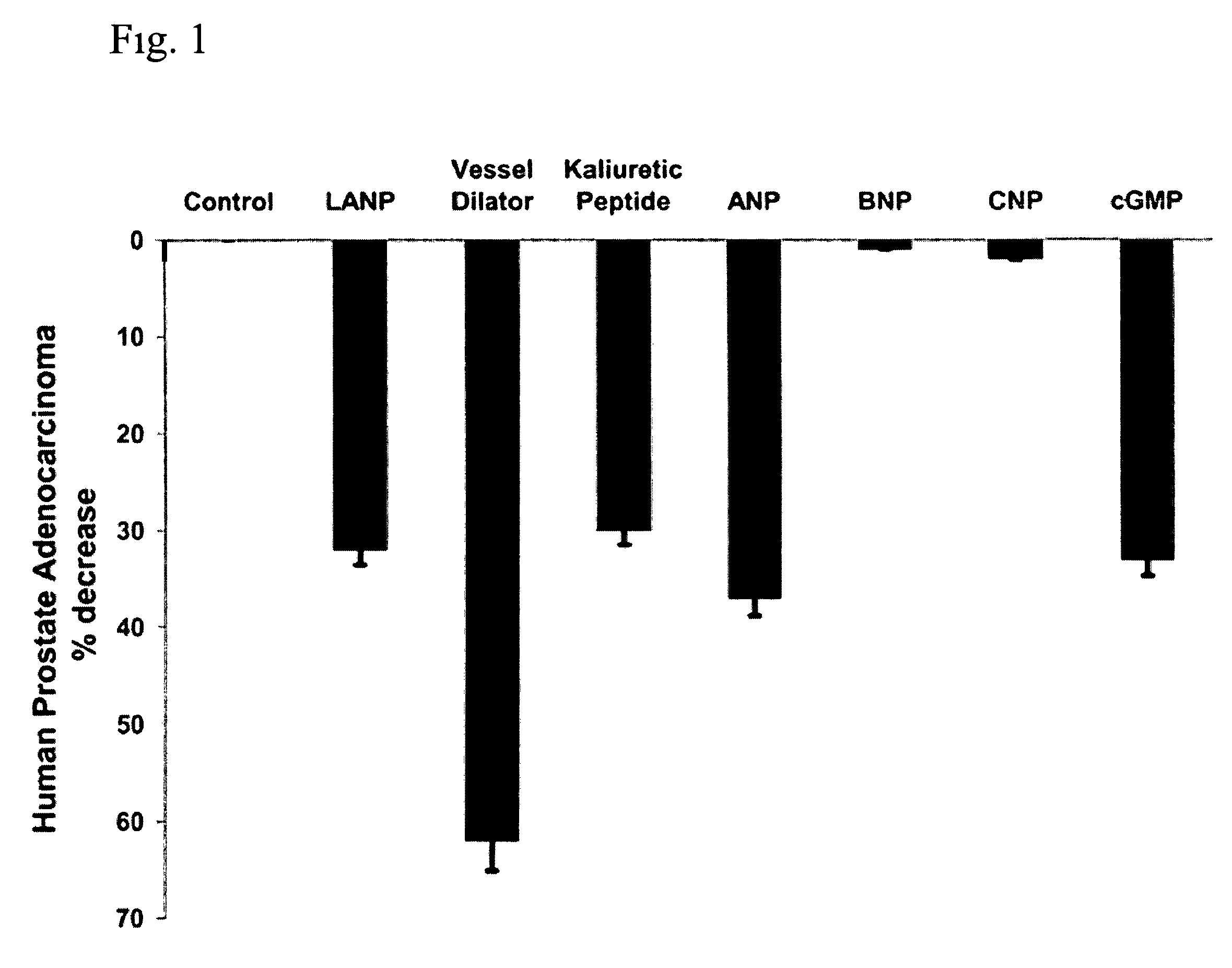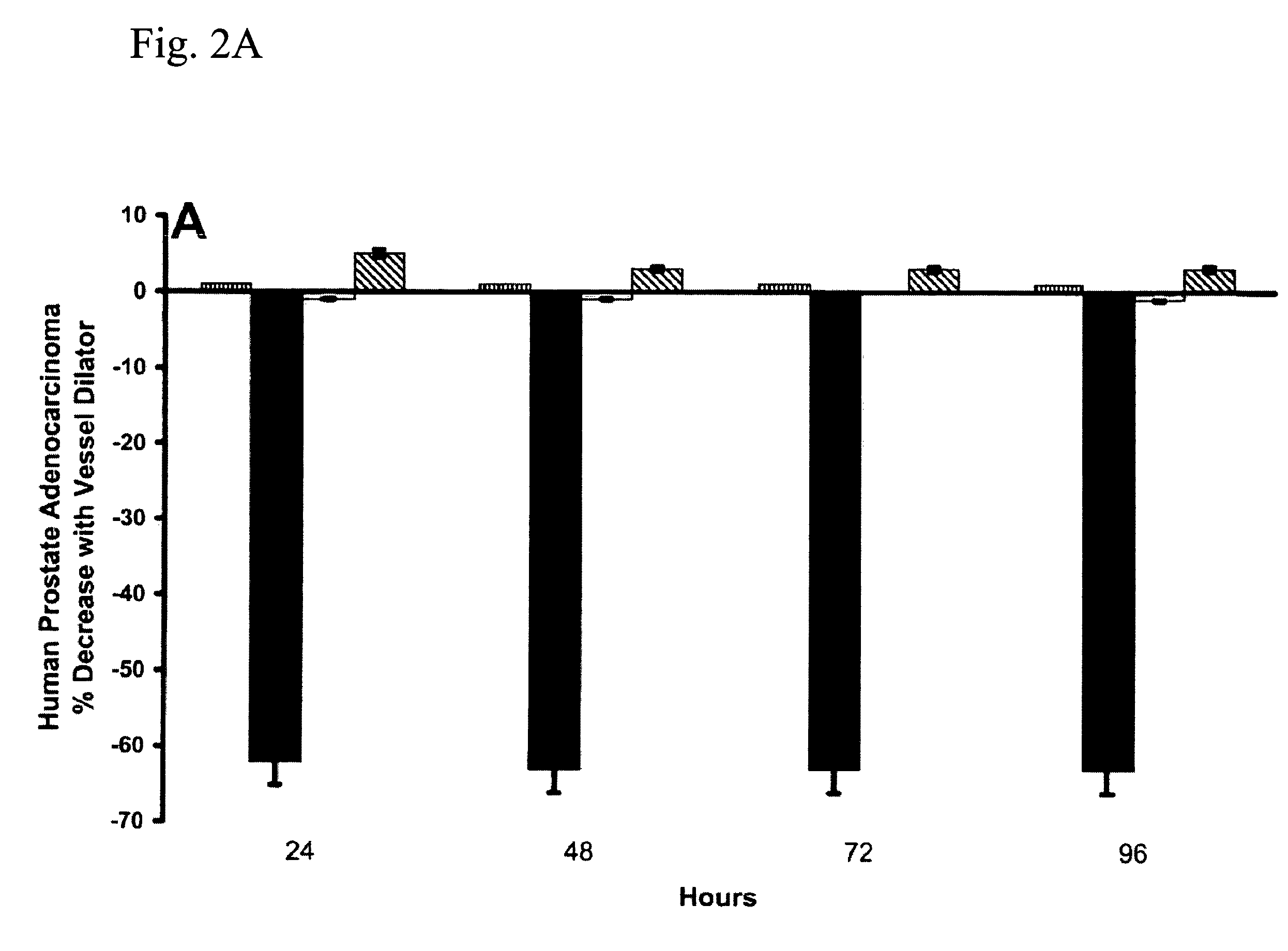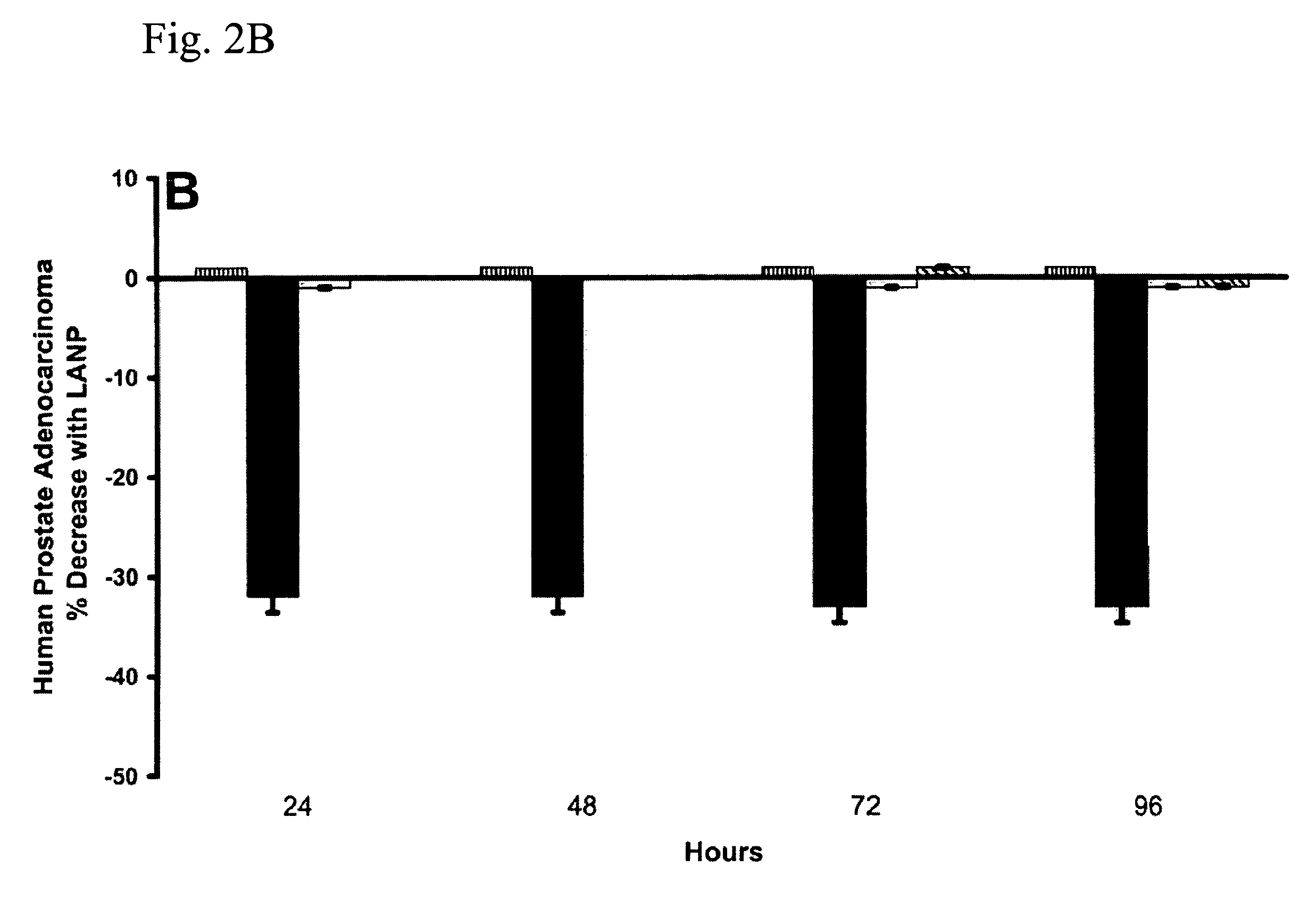Cancer treatment using C-type natriuretic peptides
a natriuretic peptide and cancer treatment technology, applied in the direction of peptides, drug compositions, peptides, etc., can solve the problems of rare surgical cure and early metastaticity, and achieve the effect of reducing the number of human small-cell lung cancer cells, improving cure rate, and improving cure ra
- Summary
- Abstract
- Description
- Claims
- Application Information
AI Technical Summary
Benefits of technology
Problems solved by technology
Method used
Image
Examples
example i
Prostate Adenocarcinoma Cells
[0027]All four of the peptide hormones synthesized by ANP gene, i.e., LANP, vessel dilator, kaliuretic peptide and ANP had very significant (P<0.001) effects at their 1 mM concentrations decreasing the number of cancer cells by 87% to 97.4% within 24 hours.
[0028]Vessel dilator was the most potent of these peptide hormones in decreasing the number of the human prostate cancer cells at each of the respective concentrations of these peptide hormones (FIG. 3). Vessel dilator had significant (P<0.001) effects within 24 hours at its 1 μM concentration (62% decrease in number of prostate adenocarcinoma cells) and inhibited any further proliferation of the prostate cancer cells from 24 to 96 hours (P<0.001; FIG. 2A). In the dose-response curves of the present investigation, when vessel dilator concentration was increased 10-fold and 100-fold (i.e., 10 and 100 μM), vessel dilator decreased the number of human cancer cells 72% and 91% within 24 hours (FIG. 3). Whe...
example ii
[0072]This invention is the first evidence that vessel dilator, ANP, LANP, kaliuretic peptide and CNP can decrease the number of human small-cell lung carcinoma cells. All four of the peptide hormones synthesized by the ANP gene, i.e. LANP, vessel dilator, kaliuretic peptide and ANP have been previously investigated by the inventors for their effects on adenocarcinomas, i.e. human pancreatic and breast adenocarcinomas. Similar results were found with human pancreatic and breast adenocarcinomas to each of the four peptide hormones synthesized by the ANP gene decreasing the number of human pancreatic adenocarcinoma cells during the first 24 hours 34% to 65% at their 1-μM concentrations with similar decreases in human breast adenocarcinoma cells. Thus, these four peptide hormones significantly decrease the number of cancer cells in both adenocarcinomas and small-cell lung carcinomas. The present invention indicates therefore that these four peptide hormones signifi...
PUM
| Property | Measurement | Unit |
|---|---|---|
| time | aaaaa | aaaaa |
| time | aaaaa | aaaaa |
| temperature | aaaaa | aaaaa |
Abstract
Description
Claims
Application Information
 Login to View More
Login to View More - R&D
- Intellectual Property
- Life Sciences
- Materials
- Tech Scout
- Unparalleled Data Quality
- Higher Quality Content
- 60% Fewer Hallucinations
Browse by: Latest US Patents, China's latest patents, Technical Efficacy Thesaurus, Application Domain, Technology Topic, Popular Technical Reports.
© 2025 PatSnap. All rights reserved.Legal|Privacy policy|Modern Slavery Act Transparency Statement|Sitemap|About US| Contact US: help@patsnap.com



